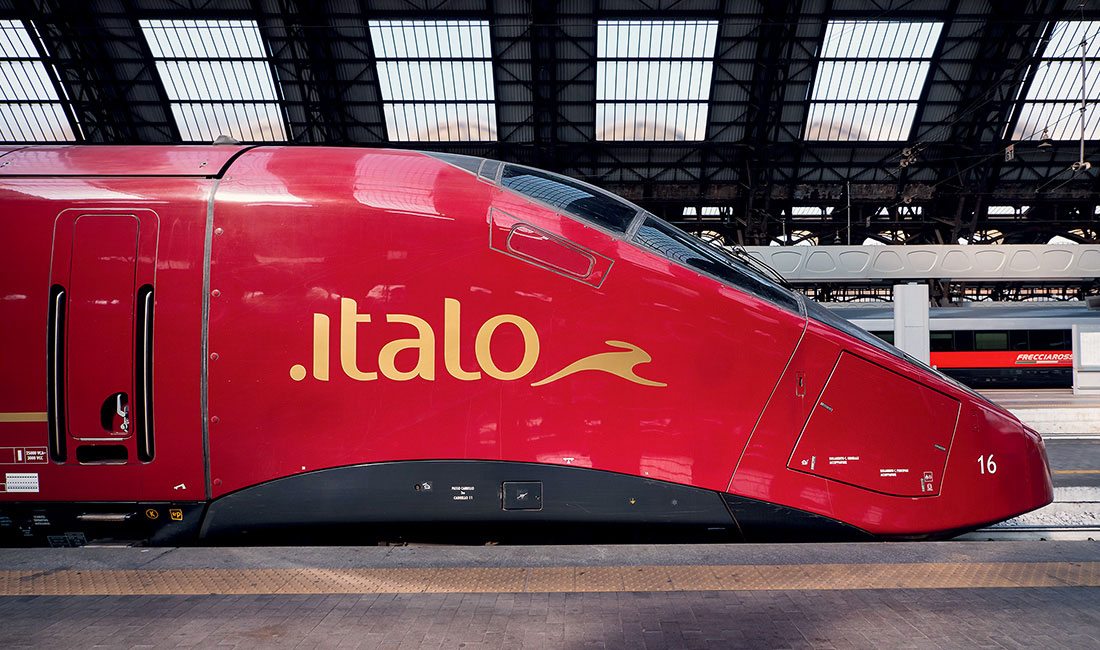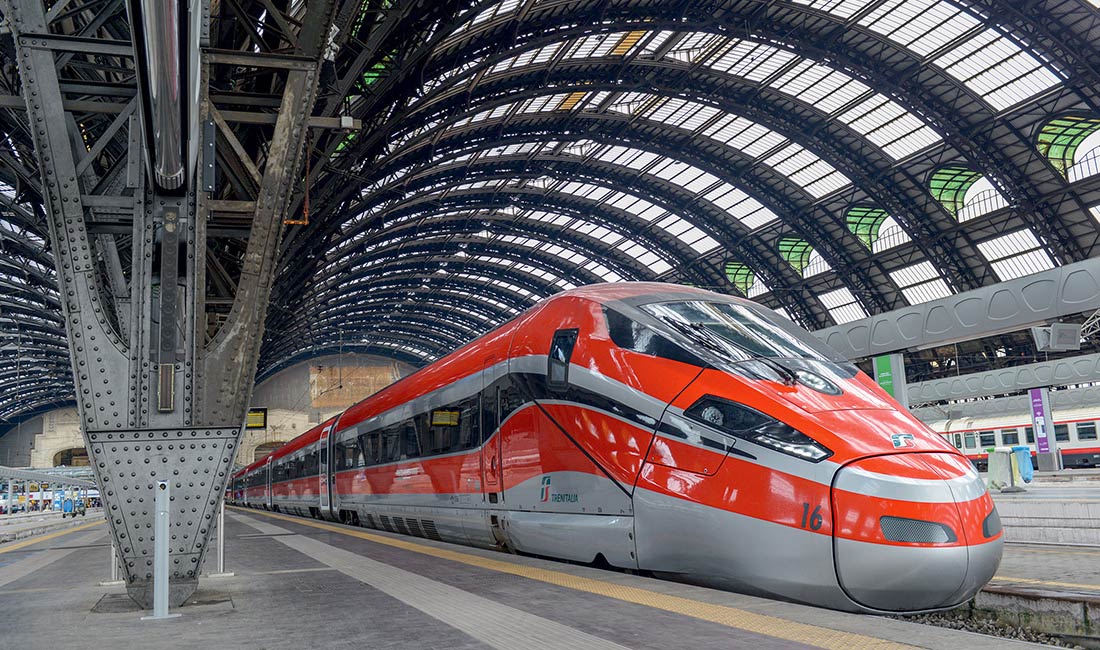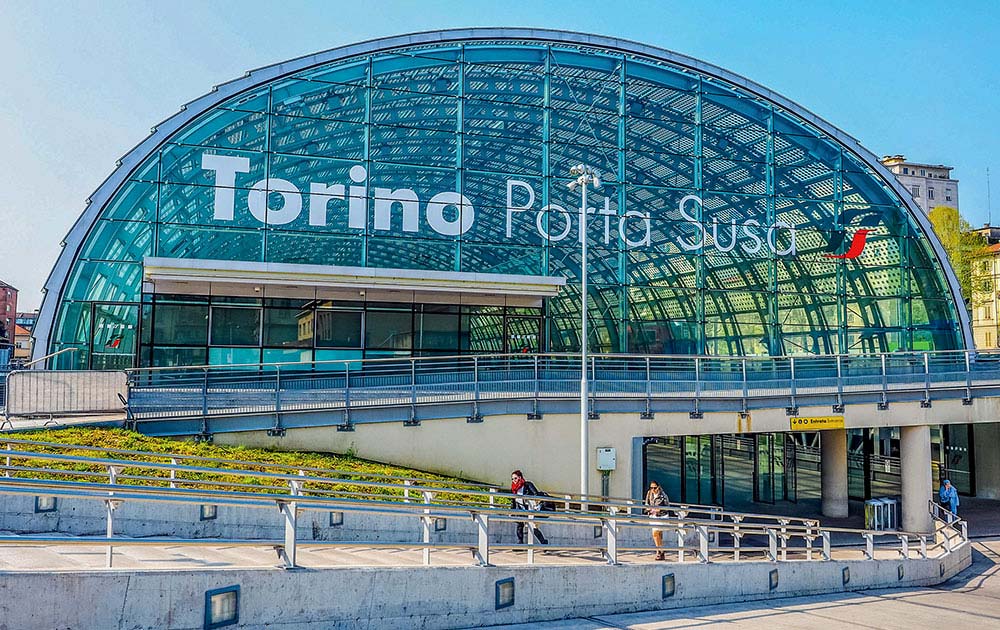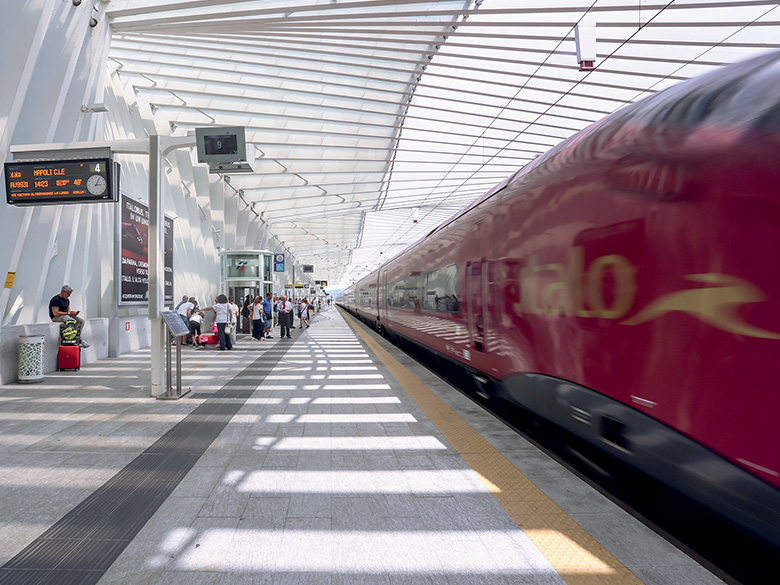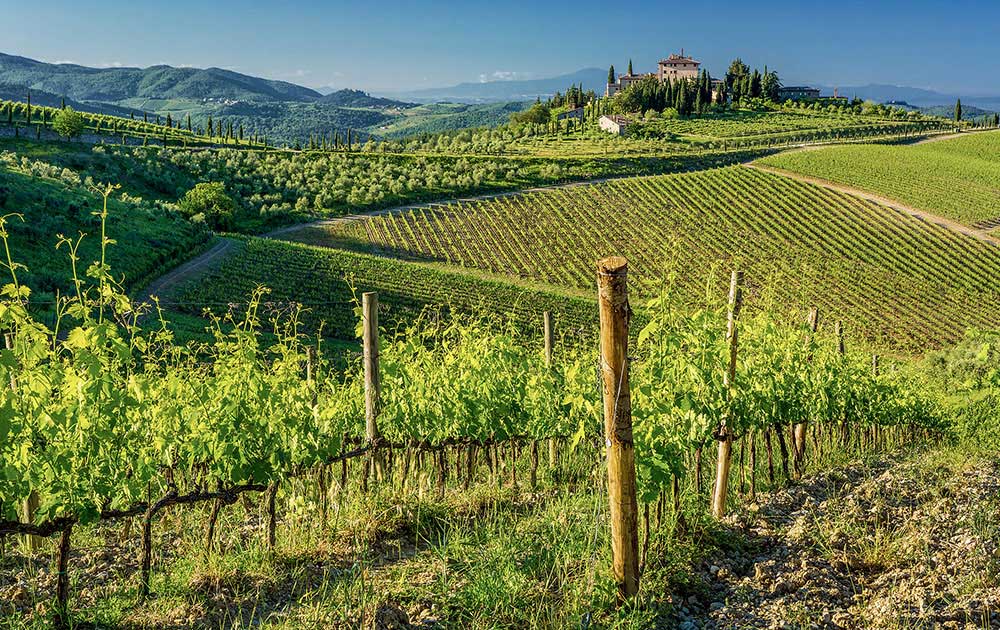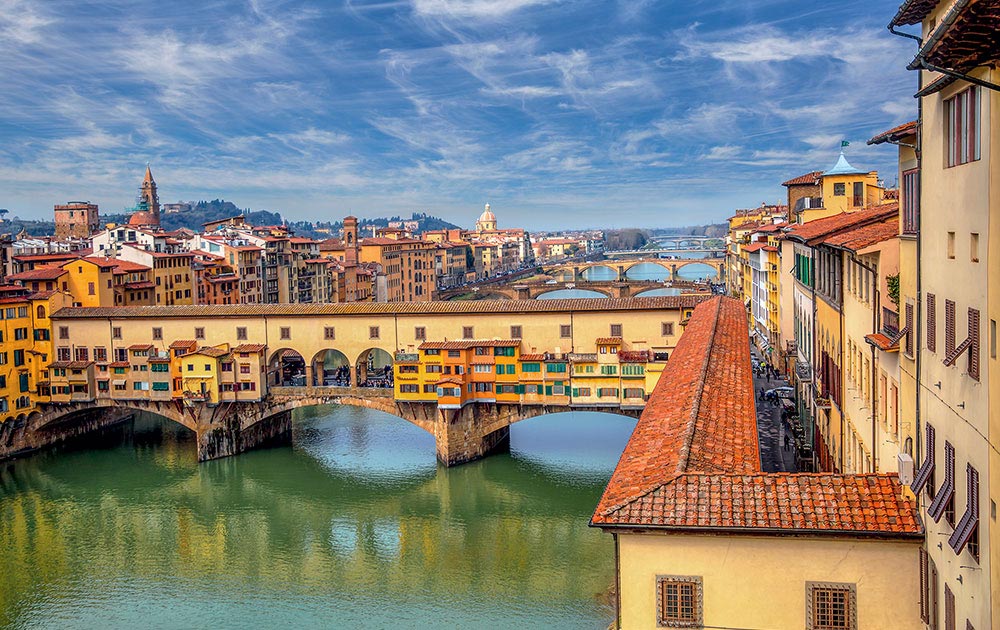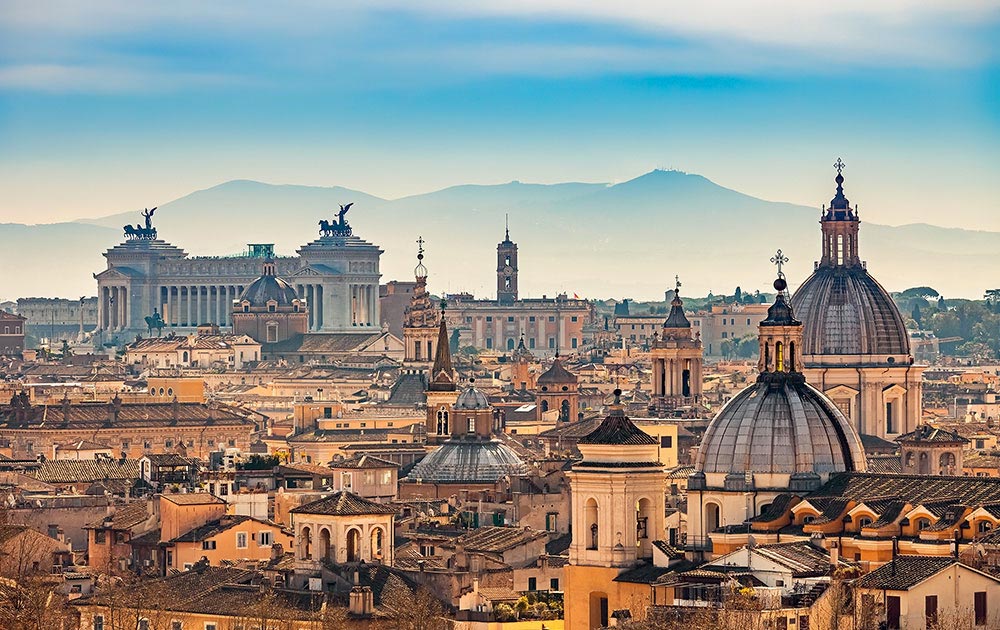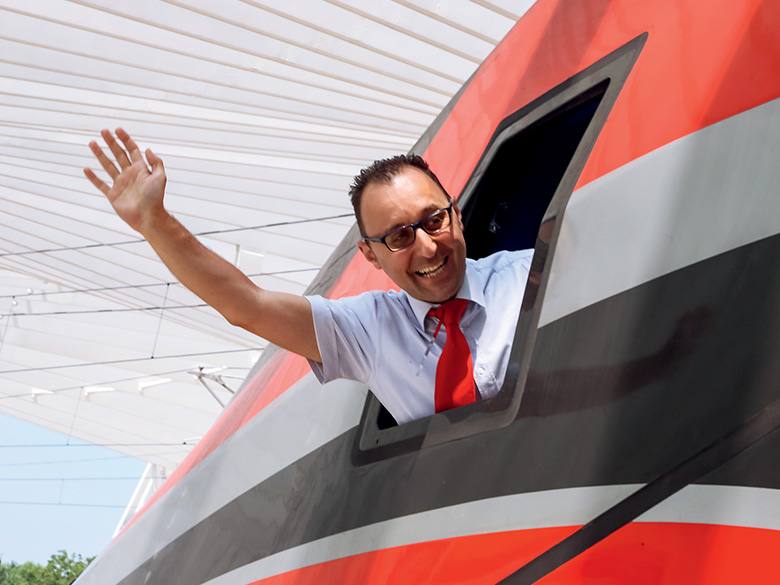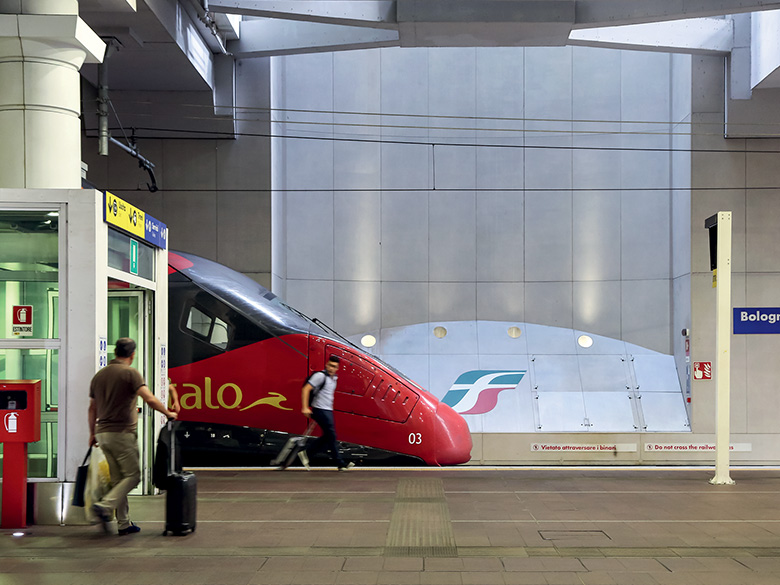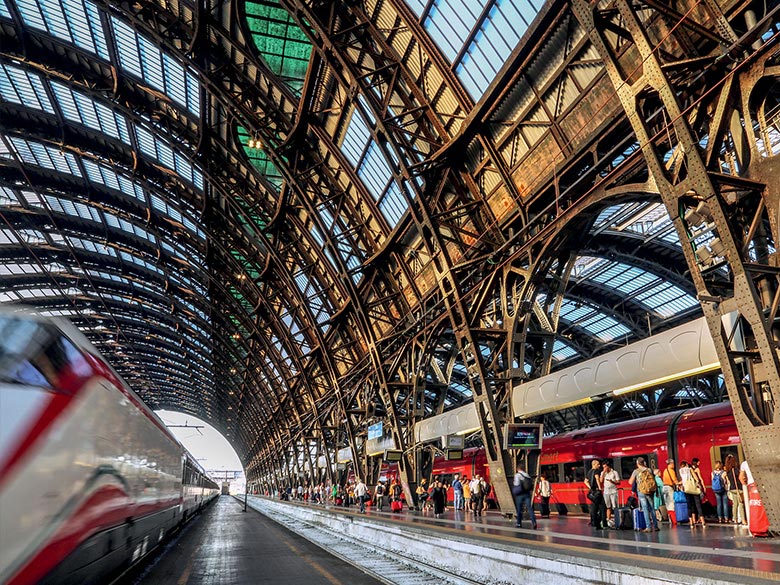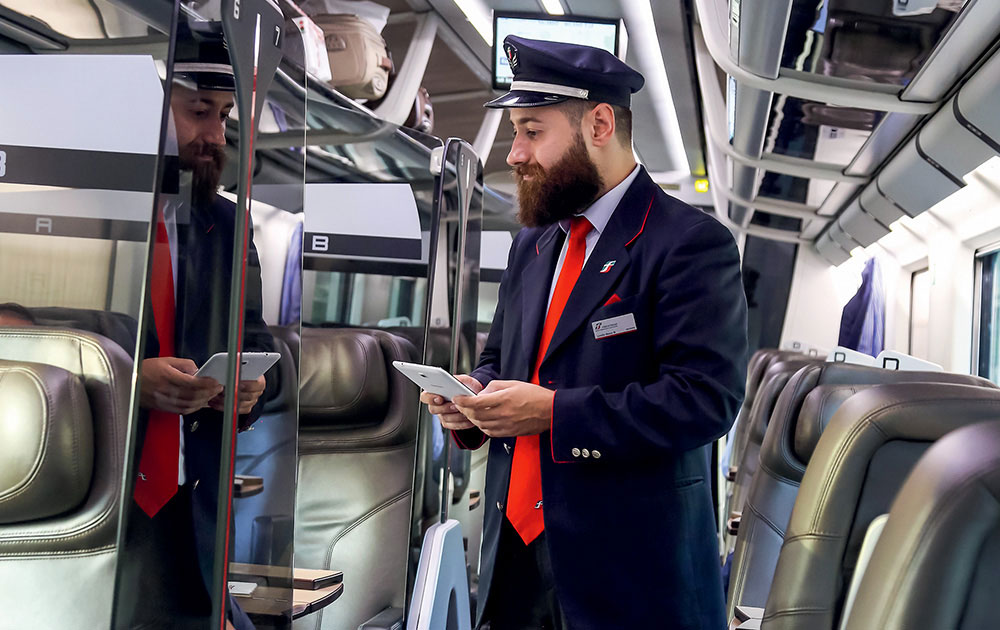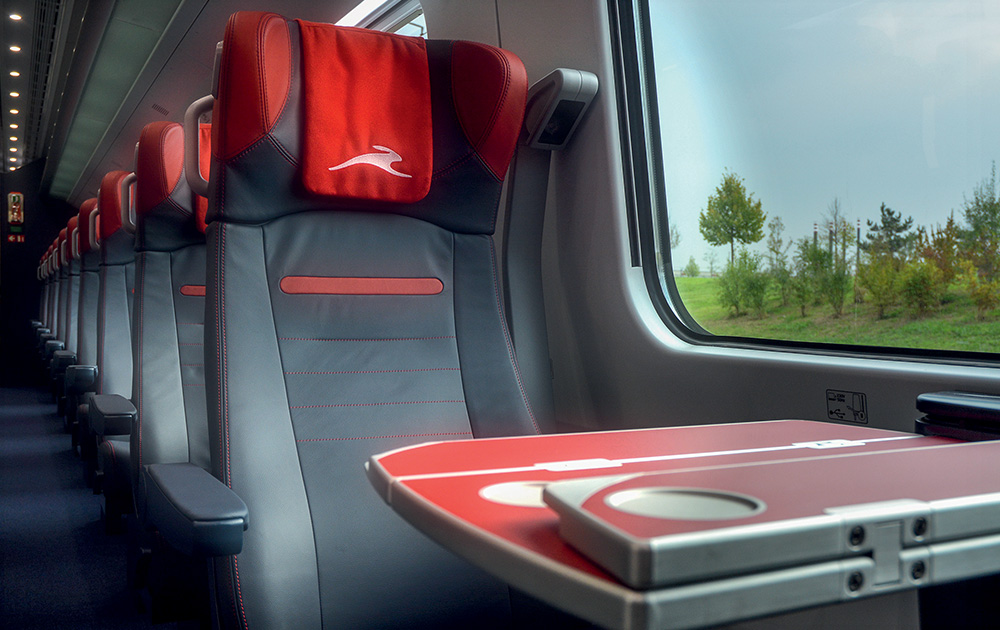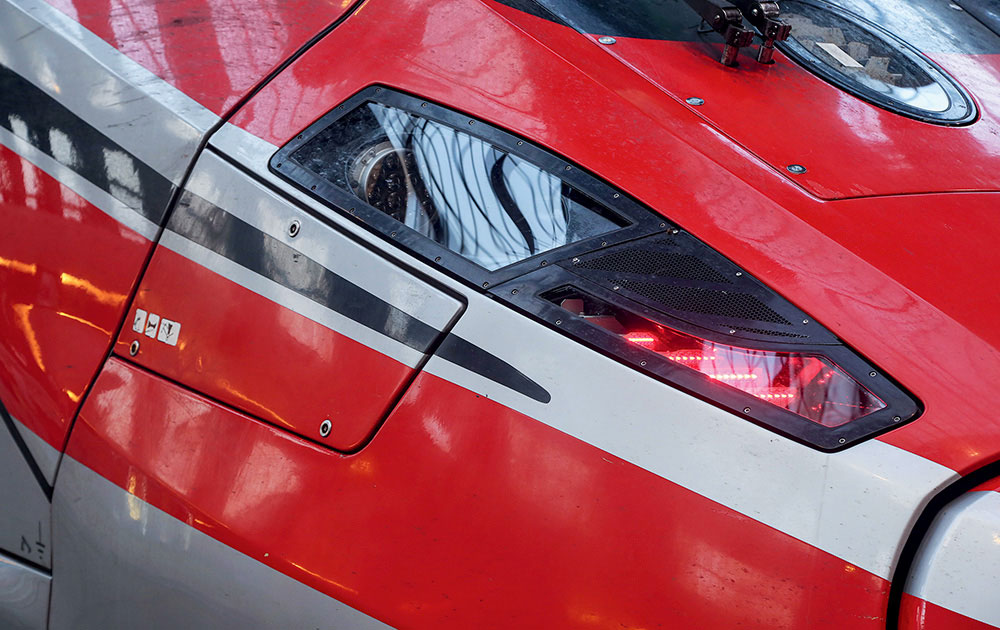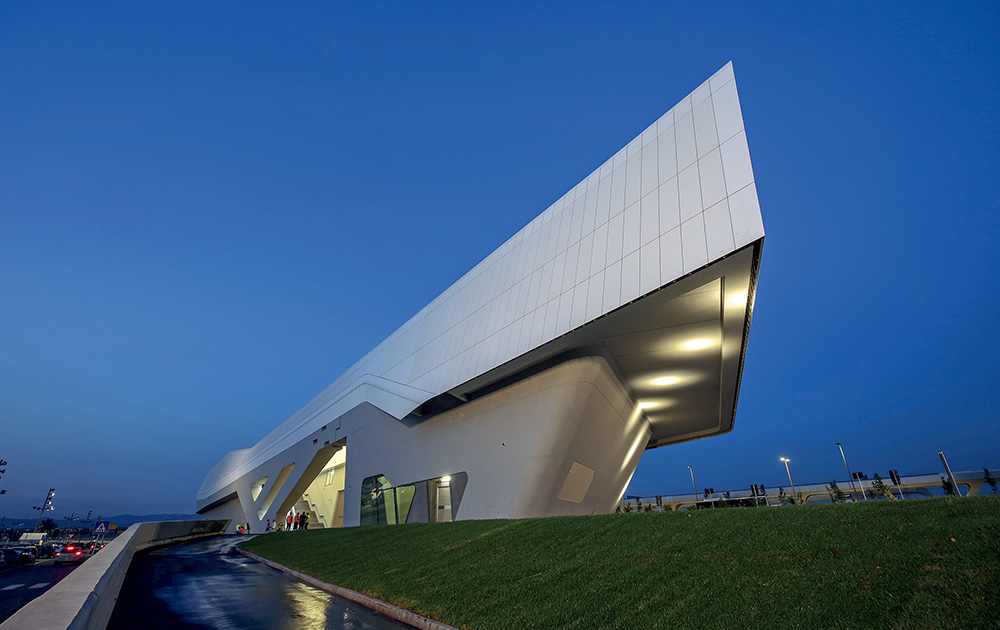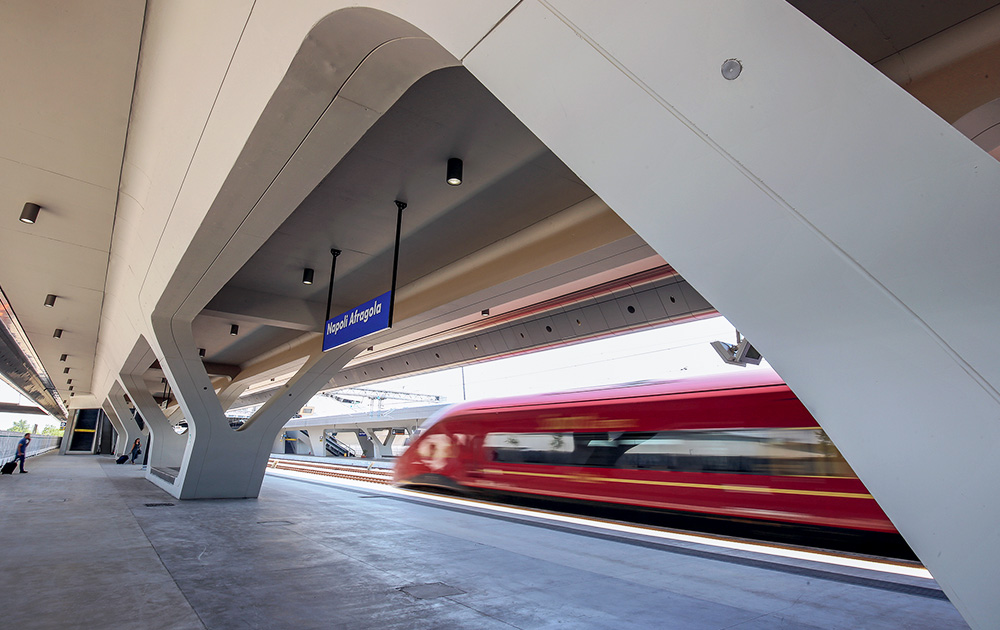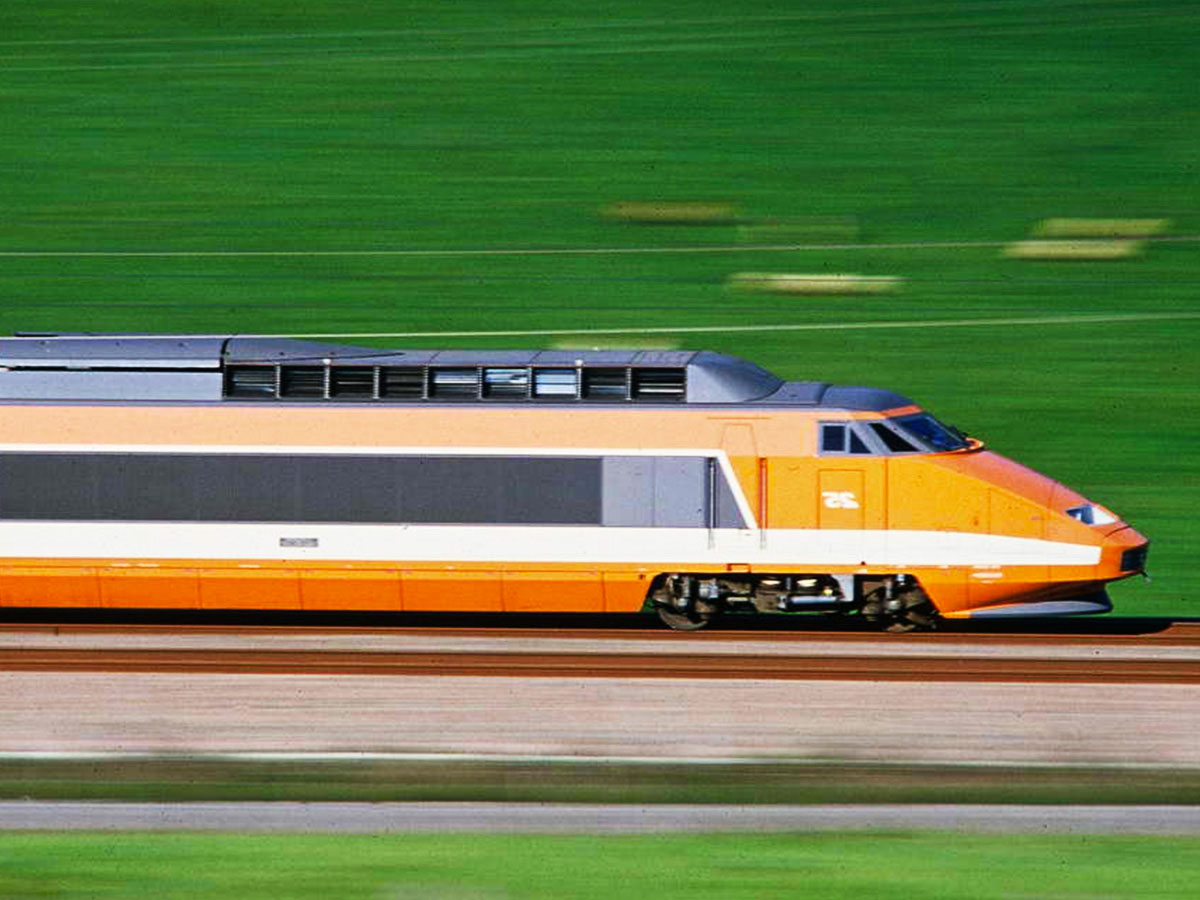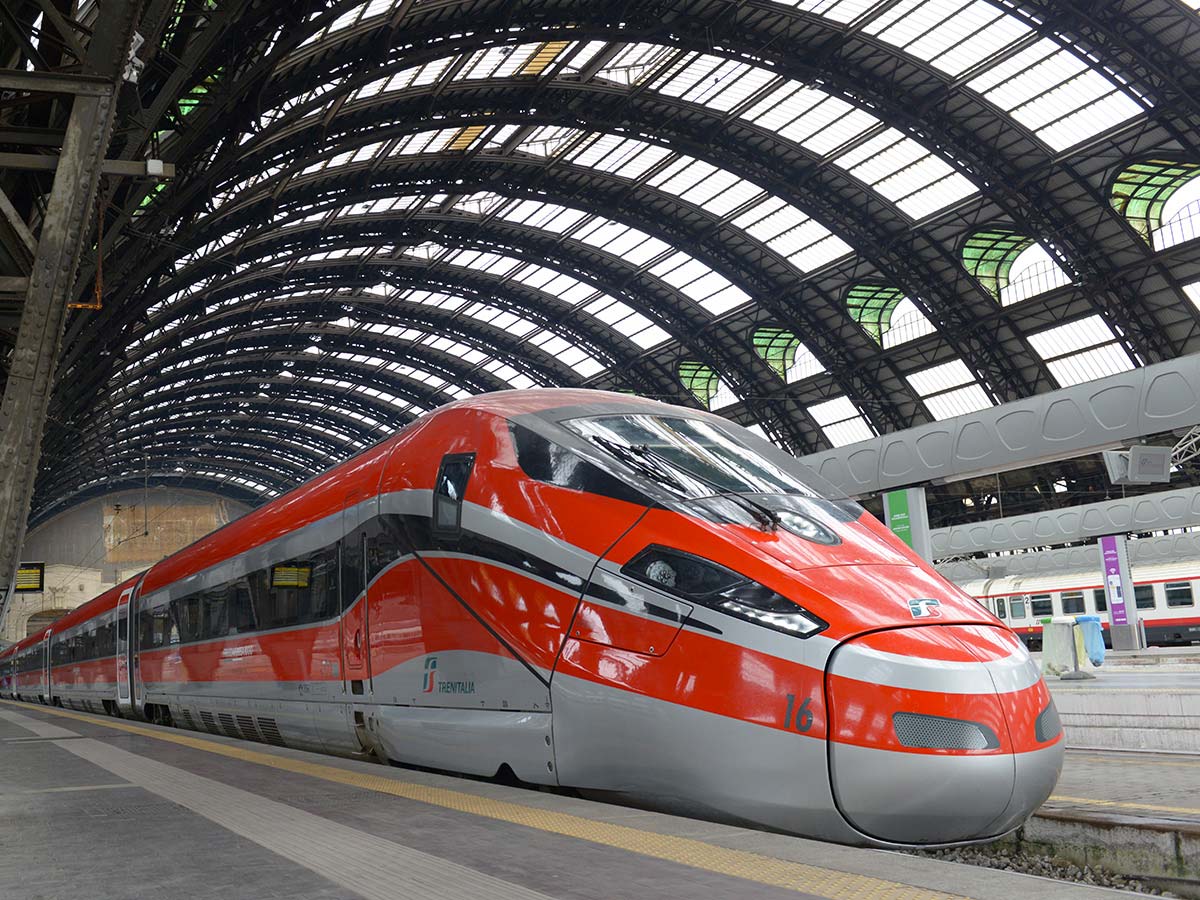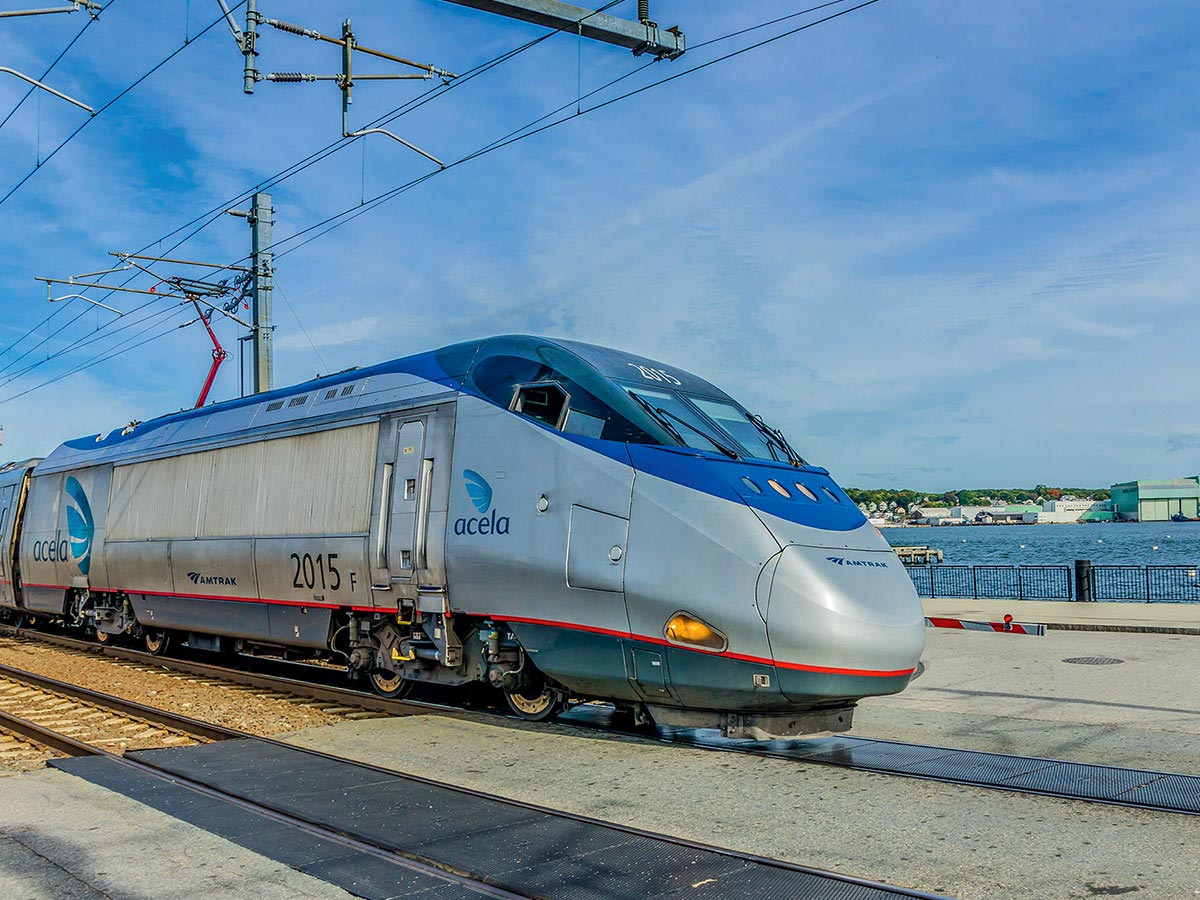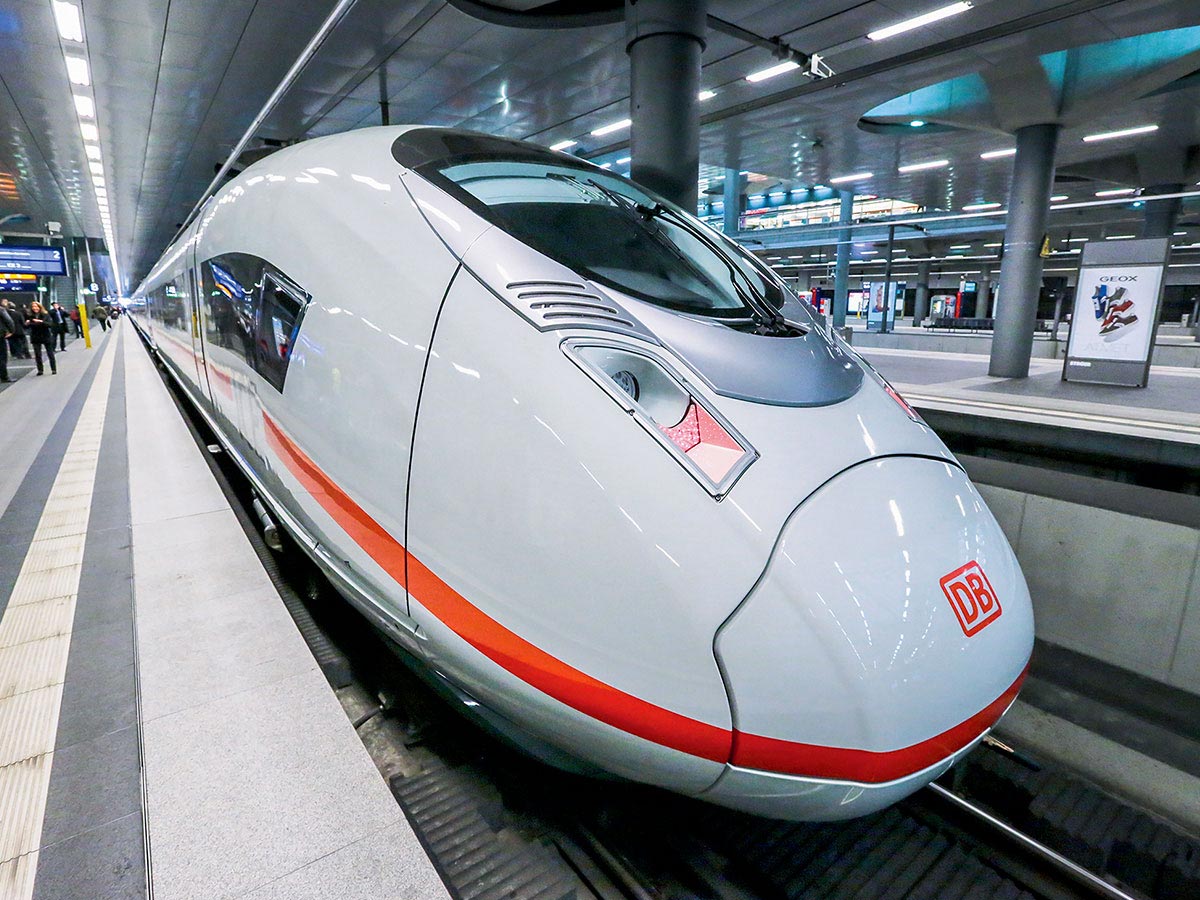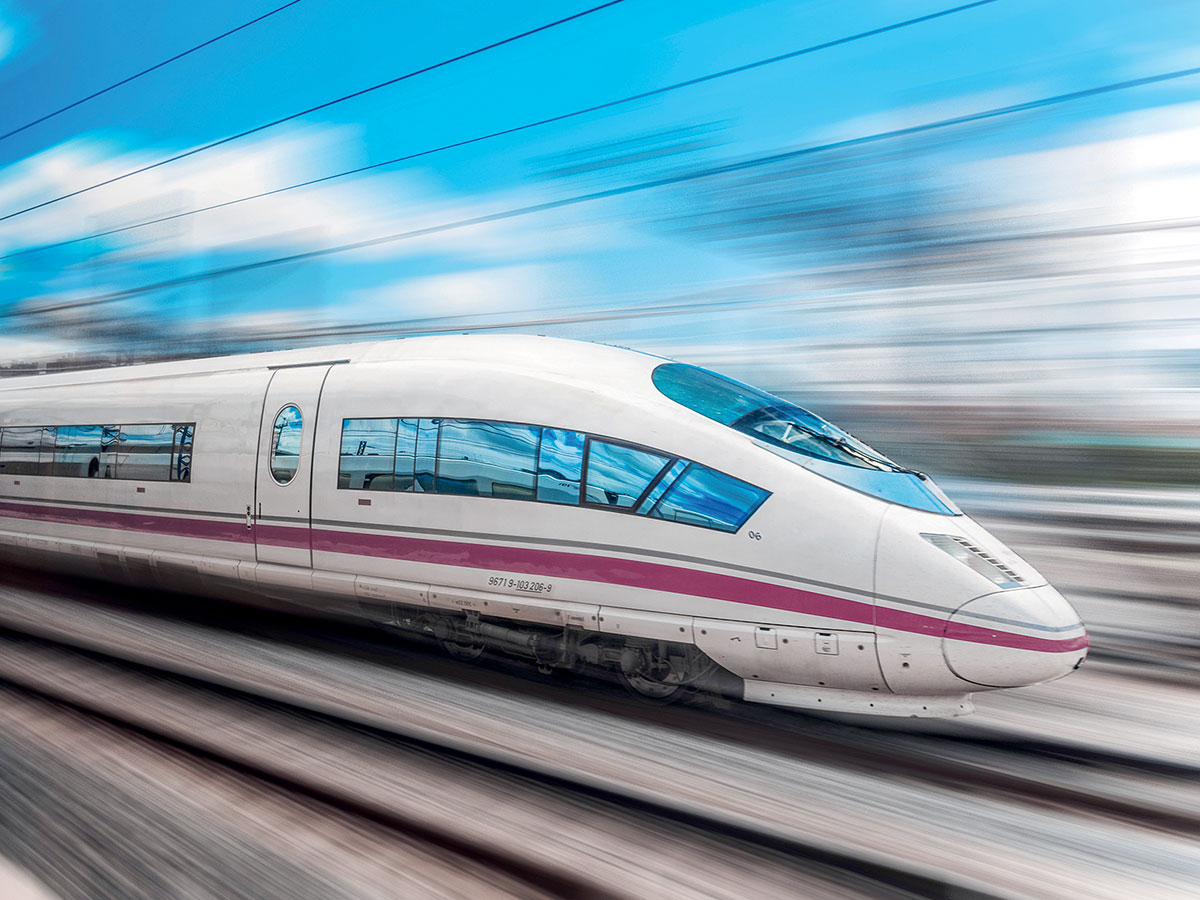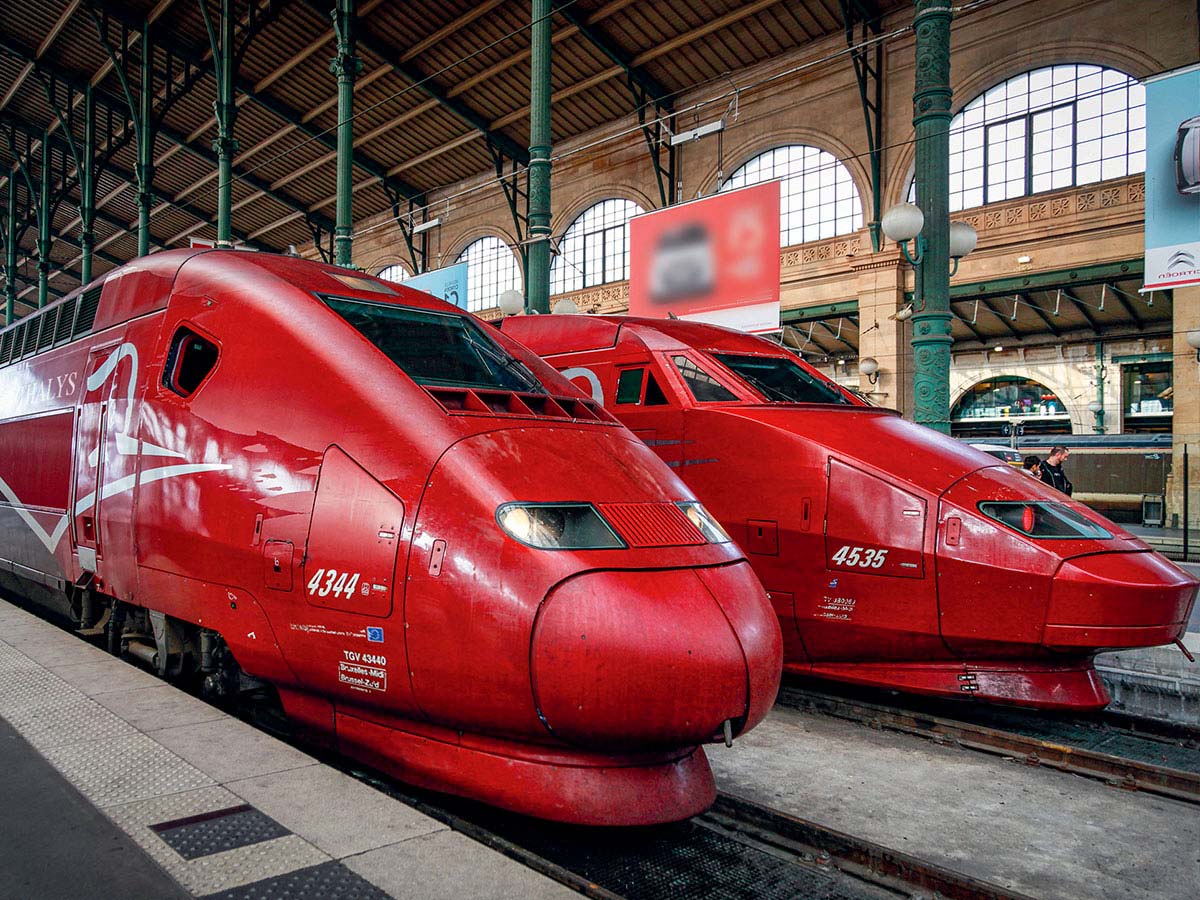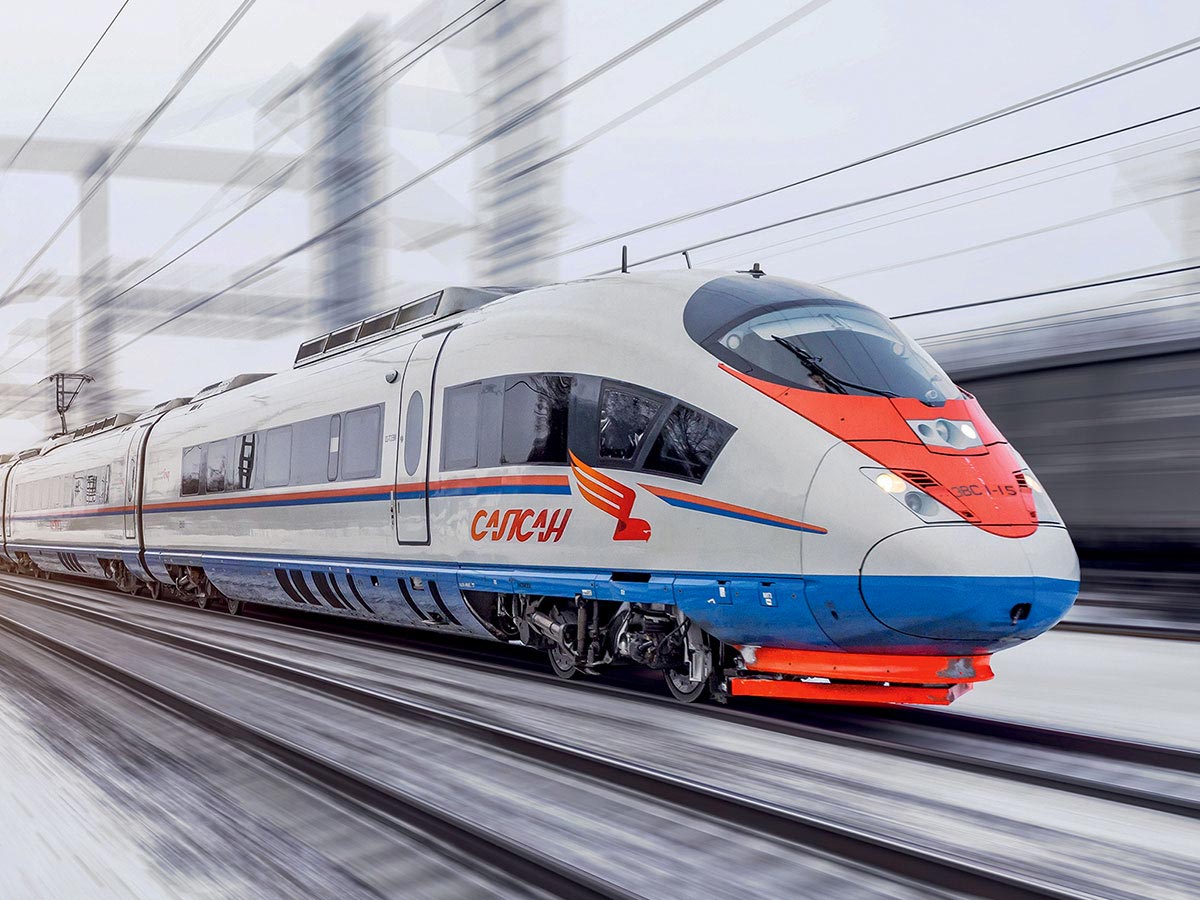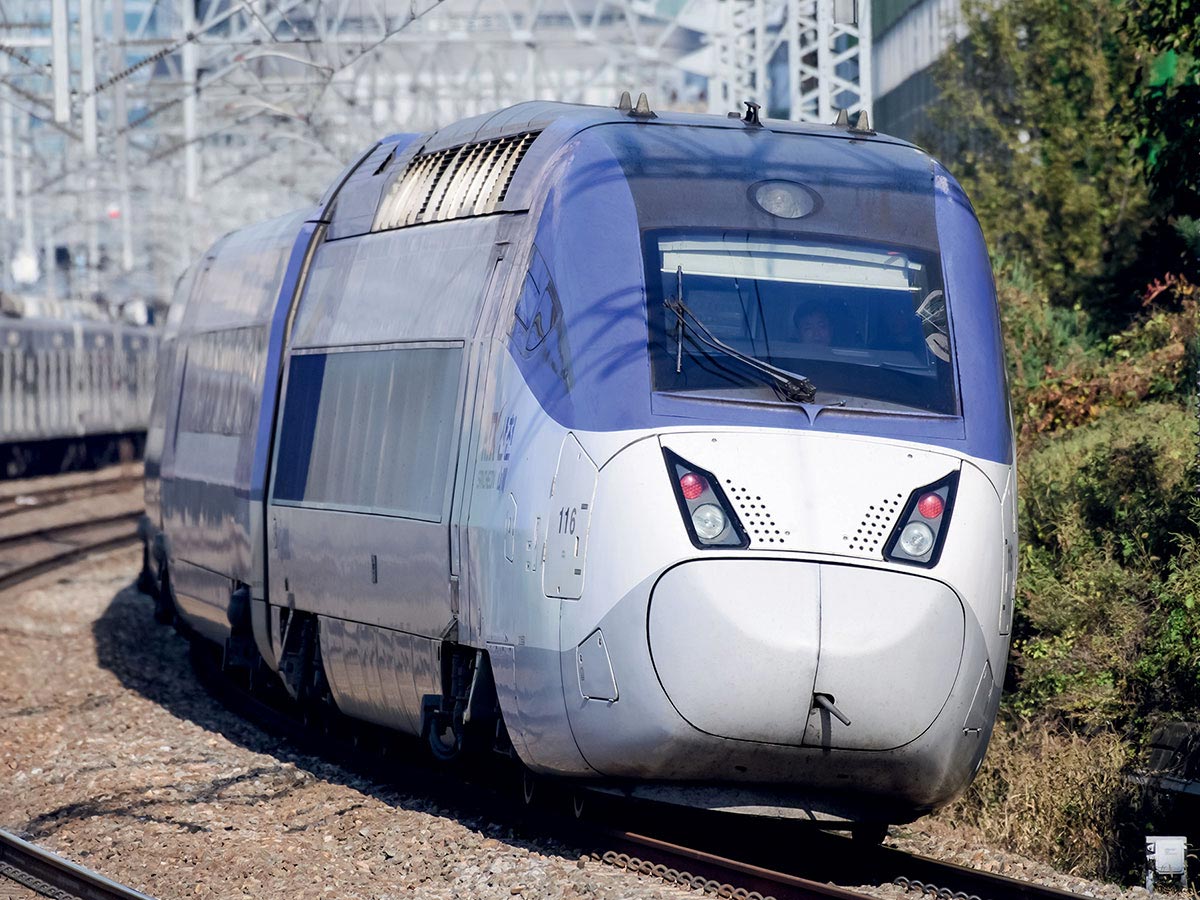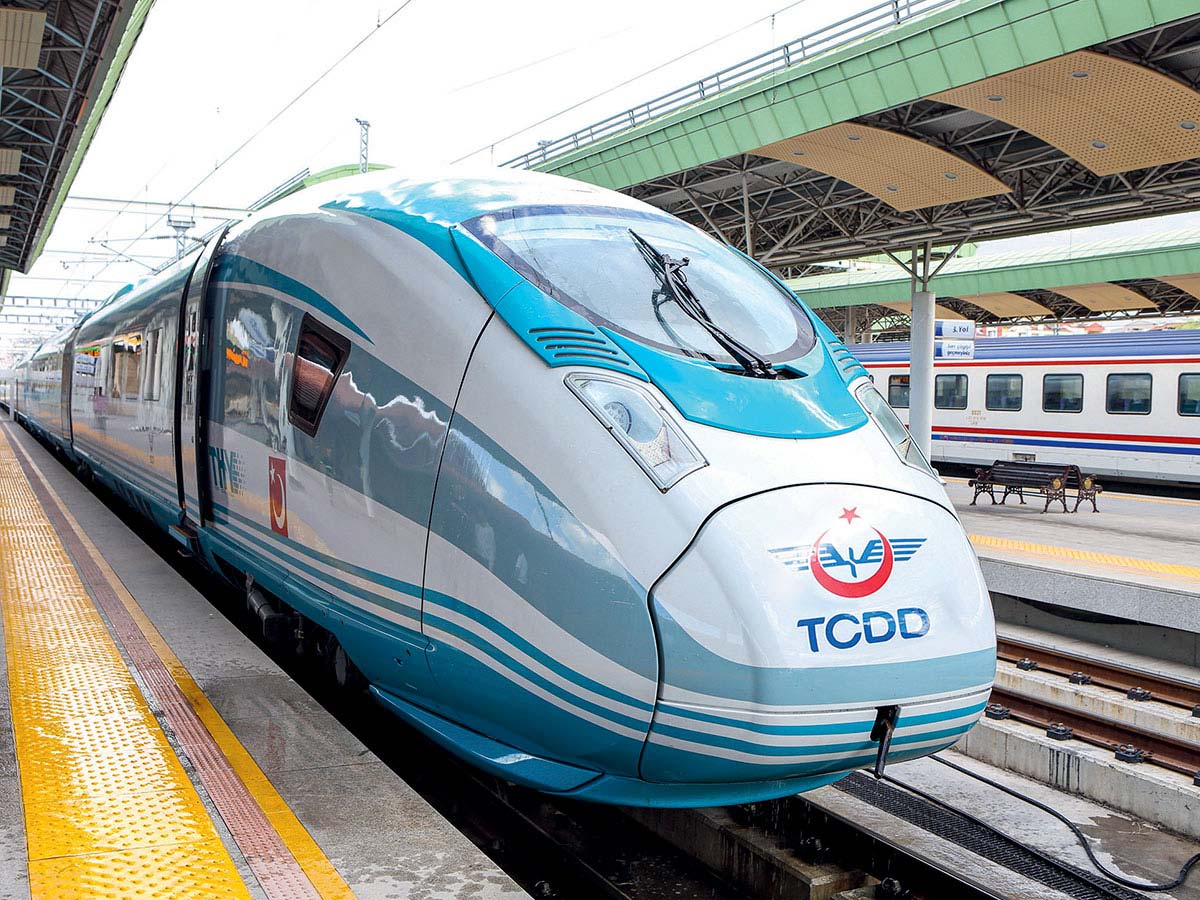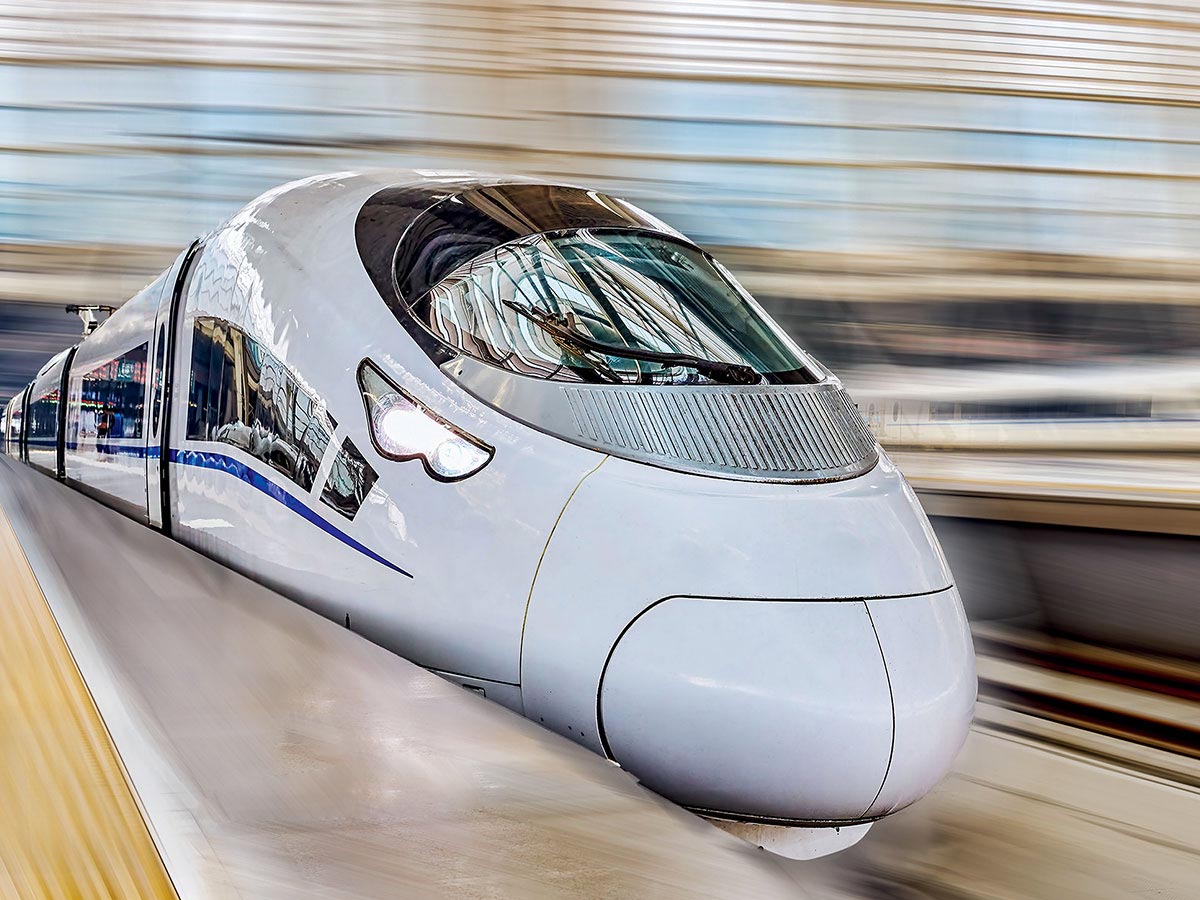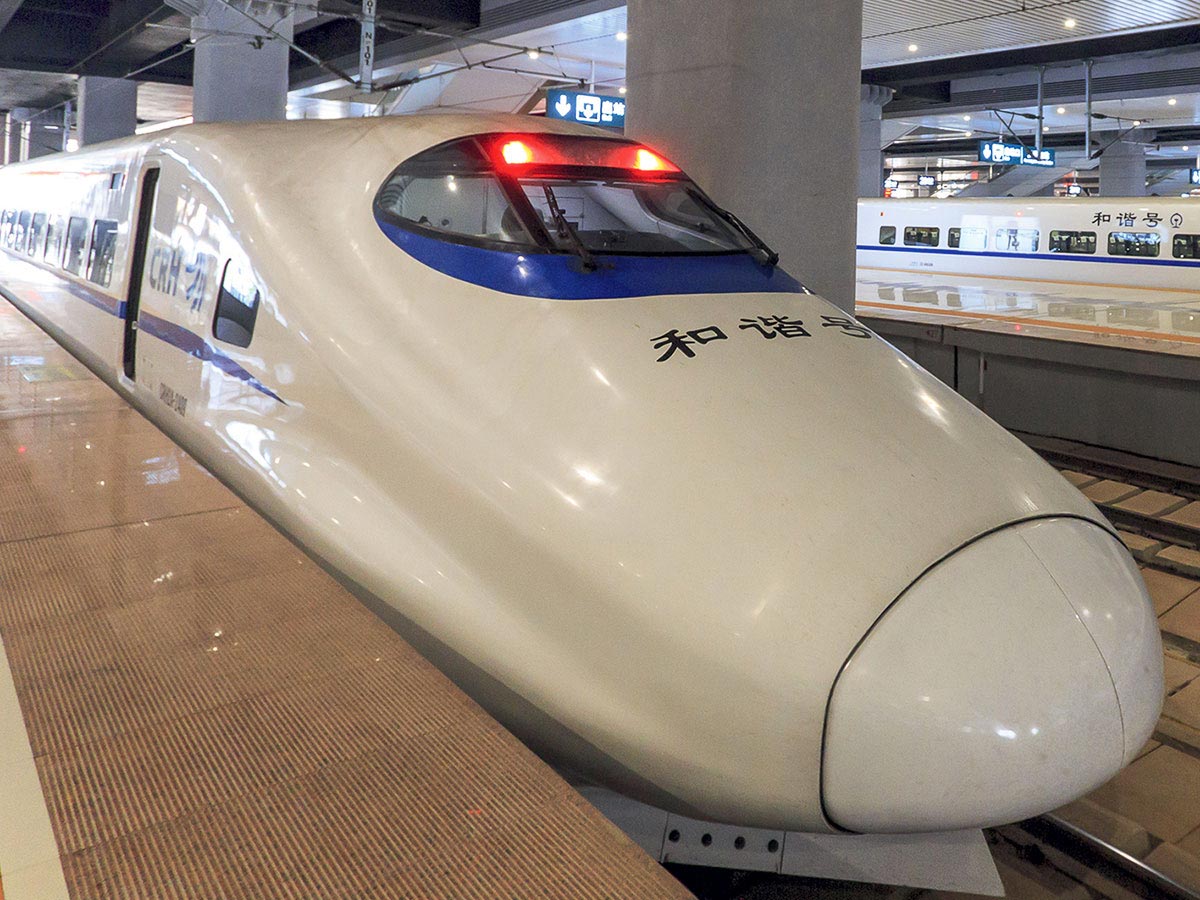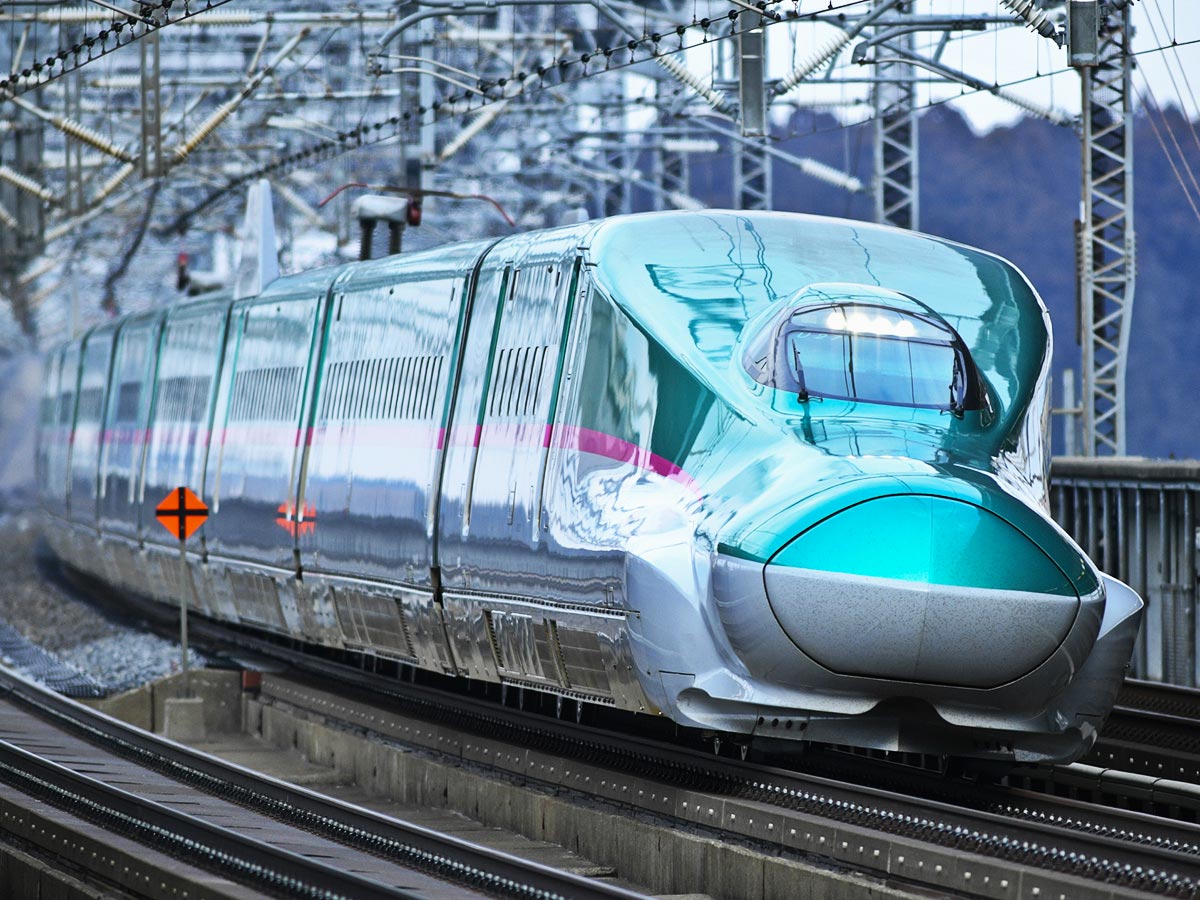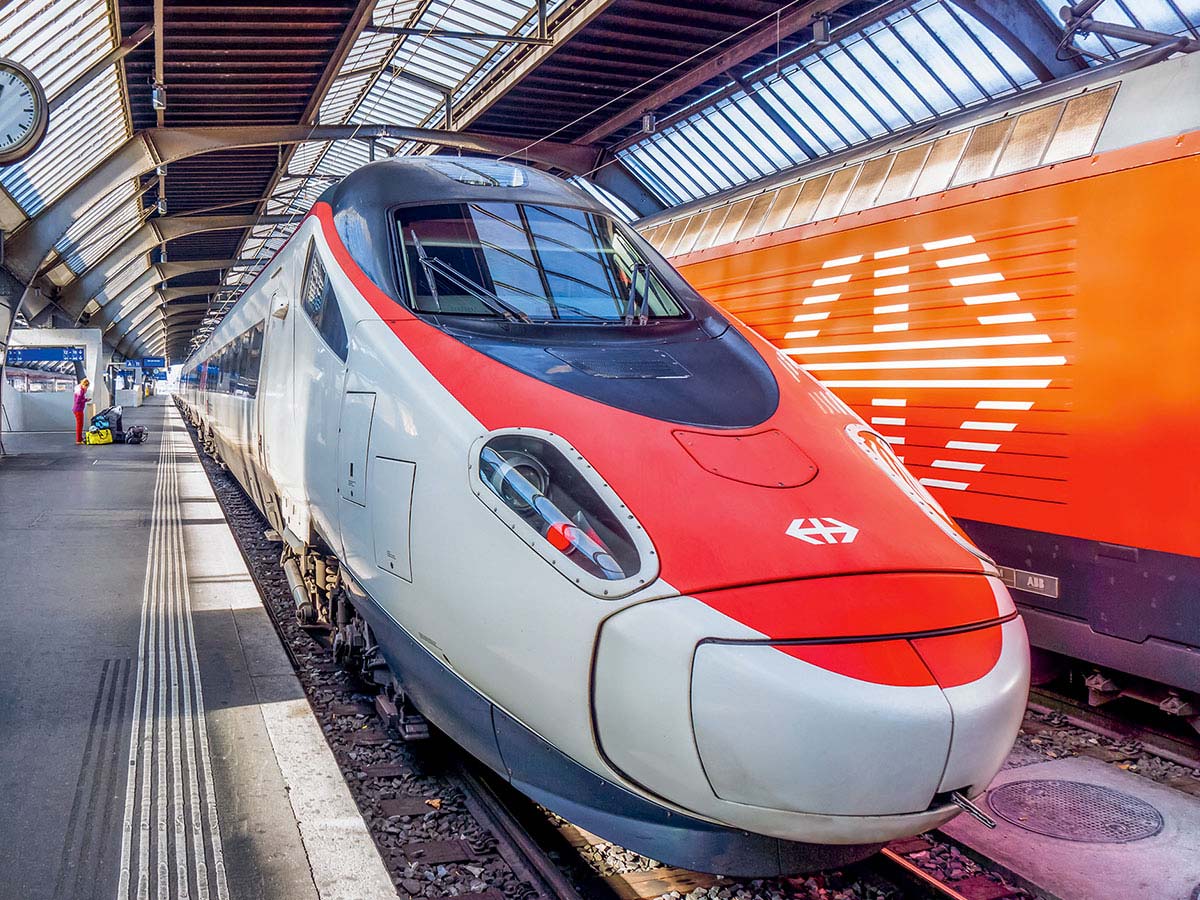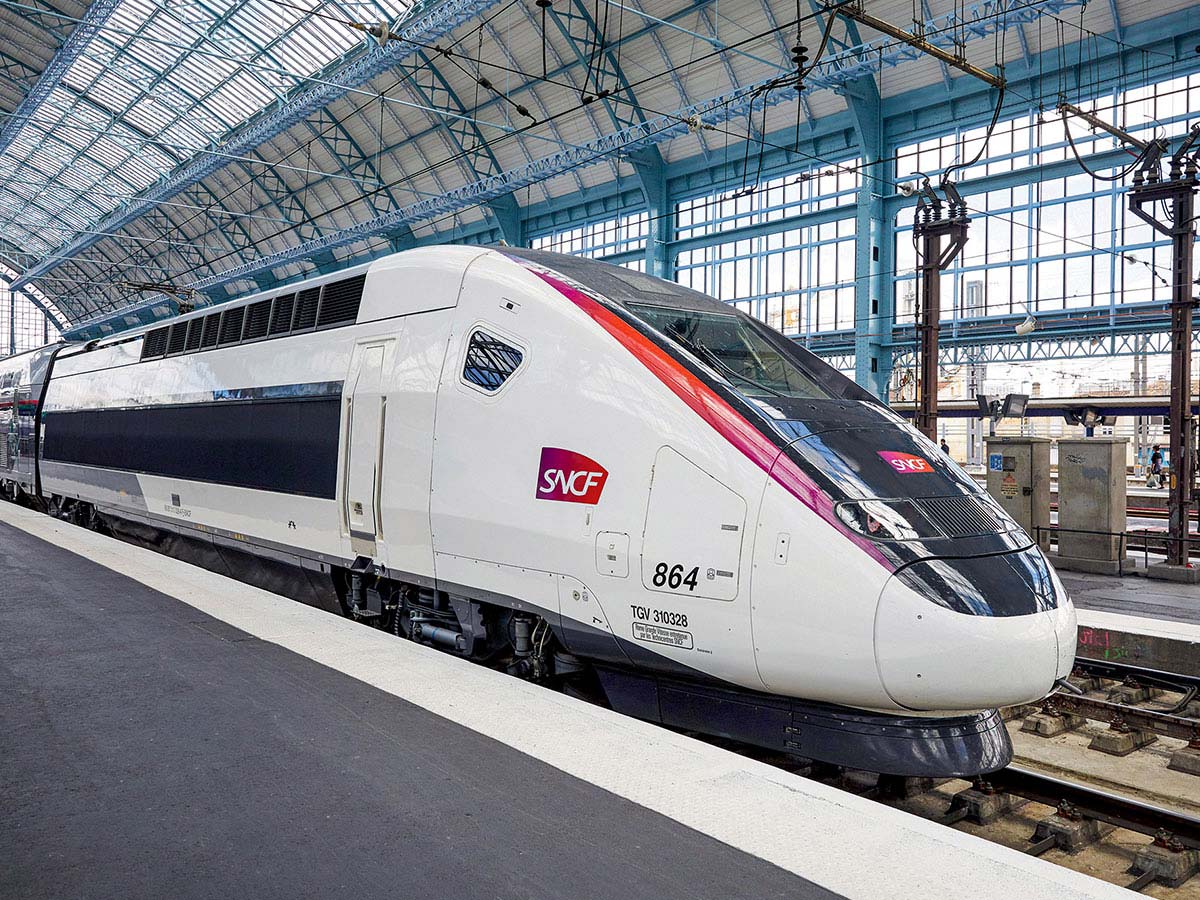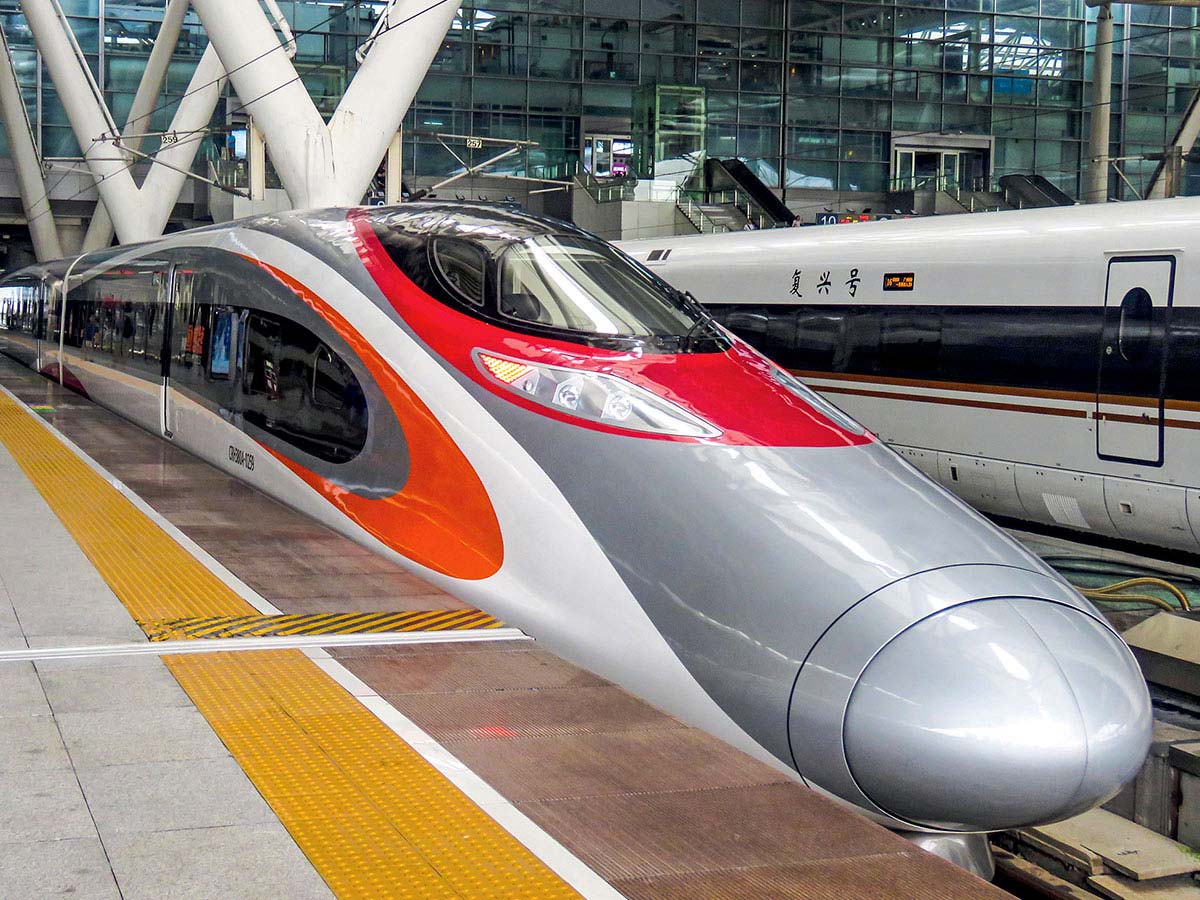TURIN > NAPLES

1992 | Italy
Journey

More Info
- Length in km: 850 km
- Name of the train: Frecciarossa & .Italo
Setting off for Milan, Florence, Rome or Naples is to travel into the heart of Western culture and discover an infinitely rich heritage. It is to share memorable moments of conviviality, or to fall under the charm of bel canto. Travellers can reach these dream destinations via the north-south high-speed line from Turin to Naples since 2009. The construction of the line is a tremendous railway achievement, given the rugged terrain of the peninsula. Italy was one of the first countries in Europe to introduce high-speed, when the first section of the line from Rome to Florence was introduced into service in 1992, and was also the first European country to allow for competition among rail lines. This choice has met with great success. Thanks to service offered by two companies –Trenitalia and Nuovo Trasporto Viaggiatori (NTV) – Italians now use the Frecciarossa or .Italo trains in the same way commuters might take the metro, at very attractive prices. Today passengers can continue on towards Venice and Trieste to the east, Genoa to the west, and Bari and Salerno to the south.
Leaving Turin
Situated in the northwest of Italy, the capital city of the Piedmont region is best known as having been the capital of the automotive industry before de-industrialisation efforts in the 1980s. In 2006, Turin was host to the Winter Olympic Games – an initiative that brought a new dynamic to the city, consequently transforming greater Turin. The Spina Centrale urban boulevard was created to cover and span thirteen kilometres of railway tracks, thus connecting districts once separated by track walls. The remarkable station of Porta Susa was sited here in 2013. The station welcomes high-speed trains providing north to south shuttle service as well as TGV trains arriving from Paris.
Designed by the architects of AREP – a subsidiary of French Railways (SNCF) – in partnership with Silvio d’Ascia, the ultra-modern style of this station draws inspiration from the great urban shopping galleries of 19th century Italy. The arched glass canopy is shaped like a caterpillar, forming a glass tunnel that extends for 380 metres, roughly the length of two high-speed trainsets. Piazzas extend on both sides to meet the city streets. Station houses services, retail and restaurants are located on the ground level, while rail traffic and metro connections are coordinated 10 metres below. Two kilometres to the east of Porta Susa is the historic station of Turin Porta Nuova. Renovated several times, the only remaining feature of the station’s original architecture is the impressive facade. Porta Nuova serves as a terminus station for high-speed trains arriving from Milan, Rome, and Naples.
A network dedicated to high-speed
Italy’s adventure with high speed began in 1968 with the decision to build the new Direttissima line between Florence and Rome, capable of handling speeds up to 250km/hr. The conventional speed line is a compulsory transit point for regional and long-distance passengers as well as freight trains, and over the course of time had become completely saturated. A new route was thus created for Direttissima, shorter and less sinuous, winding its way around the Apennine Mountains stretching across the length of the peninsula. A large part of this 138-km-long line was inaugurated in 1978, receiving definitive certification for high-speed in 1992.
Italian Railways (Ferrovie dello Stato, FS) continued its momentum in the first years of the 21st century by taking three major steps: the Rome-Naples sections in 2006, Milan-Bologna in 2008, and Bologna-Florence in 2009. The completed Turin-Naples line was inaugurated on 5 December 2009. To accommodate travellers, the Italian operator opted for tilting trains, whose passenger cars incline to allow for faster speeds while negotiating curves, as mountainous terrain impeded construction of straight tracks. This marked the era of the Pendolino, the famous trainset developed by the manufacturer Fiat Ferroviaria and capable of running at 250km/hr, including the 4th generation ETR 600. Among the Italian high-speed trains operating at 300km/hr: the ETR 500, the Frecciarossa 1000 and .Italo, the AGV (automotrice à grande vitesse, or self-propelled high-speed train) built by Alstom. In the near future, Trenitalia hopes to operate trains at speeds of 350 km/hr.
Turin-Naples, the journey
Between Turin and Milan, the train runs through the immense plains of the Po, partially covered with rice fields. Fifty minutes later, the first stop is Milano Centrale. Inaugurated in 1931, this monumental station was renovated and redesigned between 2005 and 2008 to accommodate high-speed trains. Built in an eclectic architectural style, the station features a spectacular, 200-metre-long facade. Vast arches in steel and glass cover the 24 tracks. Milan, the second biggest city in the country, boasts unparalleled economic dynamism. This fashion and design capital, with its famous quadrilatero della moda, is also famous for its Duomo, a huge cathedral in flamboyant Gothic style, La Scala opera house, and romantic evenings on the banks of the city canals, or navigli.
The train crosses the River Po over a long cable-stayed viaduct, entering the ultra-modern station of Mediopadana at Reggio d’Emilia. Designed by the Spanish architect Santiago Calatrava, the station’s white steel and glass folds stretch over 500 metres. After Bologna, home to the oldest operating university in Europe, the line crosses the Apennines to reach Florence via a series of tunnels. The two longest are 17 and 15 kilometres respectively! Here is the opportunity to visit Florence, home the Italian Renaissance, and to stroll across the Ponte Vecchio or encounter the Uffizi’s gallery of geniuses – Michelangelo, Leonardo da Vinci, Raphael, Botticelli, and many others. From Florence to Rome, by way of two long tunnels, passengers will revel in the delights of the sublime landscapes of Tuscany – the land of Chianti – early morning mists, rows of cypress trees, and boxy villas perched on vineyard- scored hilltops. A very long viaduct – extending over five kilometres – spans the Paglia River at Arezzo. The train soon enters Roma Termini station, with its singular architecture: two wings, each a kilometre in length, frame the building. They are the only vestiges of the original project, judged too monumental. A long, curved canopy, known as ‘the dinosaur’, was designed in 1950 to replace the original portico. Rome, capital of Italy and cradle of the Roman Empire, retains traces of a history dating back thousands of years. Famed for its art, the city boasts a vibrant cultural life and a history closely tied to the papacy. Visitors roam freely the seven hills of the city, walking from elegant Capitol Square to the Roman Forum, and on to Saint Peter’s Square at the heart of Vatican City. Rome is also the home of Baroque and the silver screen, which immortalised the Trevi Fountain in La Dolce Vita, one of Federico Fellini’s films. Two hundred kilometres separate the capital from Naples, final destination of the journey.
A route destined to defy mountains
Building railway infrastructure in Italy is challenging. The rugged landscapes are shaped by the Apennines, which form a barrier across the centre of the peninsula. This tumultuous terrain, as well as the presence of many archaeological sites, were the primary factors taken into consideration when building the line.
The sheer number of tunnels, viaducts, and bridges built along this line is astounding. The most complicated section to complete was without doubt between Bologna and Florence. Crossing the mountain range, this line encapsulates all imaginable construction challenges: 74 kilometres of tunnels along 79 kilometres of line! A remarkable technical feat. Likewise, between Florence and Rome, the semi-mountainous terrain forced contractors to lay tracks running partly alongside the A4 motorway, and to build five new tunnels.
Other infrastructure works of note: city loops designed to relieve traffic and provide better distribution. These are used primarily by the fastest trains on the Turin-Naples line, which don’t stop at every station. Certain cities also benefit from a ‘passante’, a railway track that provides underground service.
→ Landscape seen from the train between Naples and Bologna.
Two companies, one line
In 1991, the European Union (EU) introduced competition for the railways, beginning with freight and later for international passenger services. Italy decided to pre-empt the process by opening up its national rail network. As a result, the company owned by private investors – NTV (Nuovo Trasporto Viaggiatori) – entered the high-speed market in 2006 alongside historic operator Trenitalia, a subsidiary of network manager Ferrovie dello Stato Italiane (FS) since 2000.NTV purchased 25 AGV (automotrice à grande vitesse) .Italo trainsets from Alstom, with whom it concluded a 30-year maintenance partnership for this rolling stock. Faced with this sudden competition, Trenitalia reacted by ordering fifty new trainsets – the versatile, high-performance Frecciarossa 1000, which were put into service in 2015 – from the Bombardier/Ansaldo Breda consortium. These days, travellers might see two types of train to the same destination standing side by side in the rail stations of Turin, Rome and Milan. The two operators have acquired trainsets capable of running on the European railway network and compliant with TSI (technical specifications for interoperability) requirements for high-speed. They are also compatible with the main electric power supply systems likely to be encountered across Europe.
Turnkey concept
The Italian railways took the highly innovative decision to award the concession for the high-speed construction works to TAV (Treno Alta Velocità), commissioning the company to fully manage all projects, coordinate the actions of service providers, and ensure environmental compliance. This company composed a consortium made up of three major industry groups – IRI, ENI and Fiat, all acting as prime contractor.
→ High-speed train maintenance centre in Milan.
Frecciarossa and .Italo
In the land of design, Italians fell for the two rival high-speed trains – Frecciarossa and .Italo AGV. The ‘red arrow’ Frecciarossa 1000, with its red and grey livery, was designed by Bertone, the famous designer of sports cars – including the legendary Lamborghini Miura – and a reference in Italian design. The .Italo AGV, in sleek red – a nod to Ferrari – trimmed in gold, was conceived by the automotive designer Giorgetto Giugiaro, who has designed a hundred cars for the world’s leading manufacturers. “Cosi bello che non vorresti scendere mai!” (“So beautiful, you’ll never want to get step off!”) – is the advert tagline for the Frecciarossa. Combining great comfort with state-ofthe- art technology, this train has received an environmental impact certificate for low carbon emissions as well as significant reductions in noise and vibration impacts.
There are neither 1st nor 2nd Class travel, but four levels of service on board, each with its own passenger car layout and colour scheme! A champagne hue for ‘Executive’, a 10-passenger car featuring individual swivel seats and a conference room; blue dominates the ‘Business’ space, where glass partitions isolate groups of four seats facing each other; red for ‘Premium’, and orange for economy class ‘Standard’. The power cars of the .Italo AGV bear the ‘.Italo’ logo, accompanied by a leaping hare. The brand is easy to remember, and closely associated with its full stop. Passenger cars, with their grey and red interiors and wide glass windows, are light and airy, offering design, comfort, and all on-board services. Passengers may choose among several seating area options: ‘Smart’ economy class offers a 39-seat cinema car equipped with ceiling screens; the ‘Prima’ business formula and ‘Club’ (first class) have video display screens, cloakrooms, and small private lounges.
→ A Frecciarossa 1000 at Milano-Centrale Station..
Arriving at Naples
Visitors tend to rush through Naples en route to the wonderful and ancient archaeological site of Pompeii, to the south of the city. Yet this charming, welcoming, and animated capital city of Campania is definitely worth a visit. Located at the base of Mount Vesuvius, the city fans out around a sumptuous Mediterranean bay, whose southern tip meets a dream destination: the isle of Capri. Naples is best discovered by strolling through its narrow winding streets to discover centuries of hidden artistic and architectural heritage, and of course by listening to the rhythms of Neapolitan songs and sampling some pizza, which is said to have been invented here. Two stations serve high-speed trains arriving from Turin, Milan and Rome. To the north, Napoli-Afragola – opened in 2017 – boasts stunning architecture. Designed by Zaha Hadid, the ultra-modern lines of the station stretch 400 metres across the surrounding countryside. Napoli Centrale lies at the heart of the city, close to the historic old town district.
→ The Bay of Naples.
Increased mobility and prospects for the future
The railway system had long been disadvantaged by a preference for the motorway, but has now been transformed by high-speed. Faster, more reliable, and more environmentally-friendly, the high-speed train has today surpassed air and road travel to become the mode of choice. Indeed, rail has exerted its revenge upon the automobile, much-favoured in post-war Italy. And this to such an extent that automotive brands – in admiration of higher rail travel speeds – are now investing in the train. The Turin-Naples line, which today takes five hours and 30 minutes to travel, has reduced journey times between the intermediate cities of Milan, Florence, and Rome, all now just one or two hours from each other. The opening of the railway market has definitively impacted traffic.
Fare reductions
of 30 to 40%, more frequent service, and improved quality of service are all driving growth in both
traffic and mobility.
At the national level, connections between high-speed lines and the existing network improve traffic
flow, especially around major cities, and revitalise urban mobility. More efficient and rational journeys,
factors that affect productivity and competitiveness, benefit the economy.
Finally, shifting passenger traffic onto high-speed lines also benefits rail freight transport. Transit
times for goods transport can be optimised and the logistics offer can be increased. Better still! In
2018, the Italians entered into high-speed freight, ahead of their European partners. With a 12-wagon
train flanked by two high-speed power cars, operating on average at 180 km/h, Mercitalia, the freight
subsidiary of Ferrovie dello Stato Italiano (FS Italiano) carries as many containers as two Boeing 747
cargo planes. This represents the first step towards a high-speed freight network linking a number of
terminals across Italy.
a selection of HIGH-SPEED LINES by creation date
1964

TOKYO > OSAKA
1992

TURIN > NAPLES
1992

MADRID > SEVILLE
2002

COLOGNE > FRANKFURT
2008

BARCELONA > MADRID
2010

SEOUL > BUSAN
2011

BEIJING > SHANGHAI
2014

ANKARA > ISTANBUL
2014

LANZHOU > URUMQI
2016

SHANGHAI > KUNMING
2016

TOKYO > HAKODATE
2016


ZURICH > MILAN
2018

BEIJING > HONG KONG
2018

TANGIER > CASABLANCA
